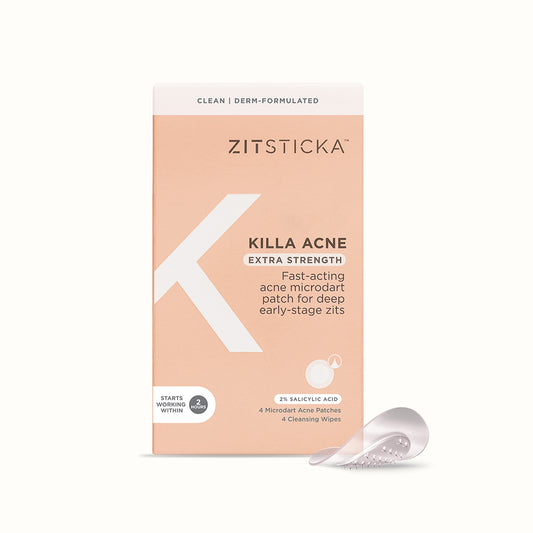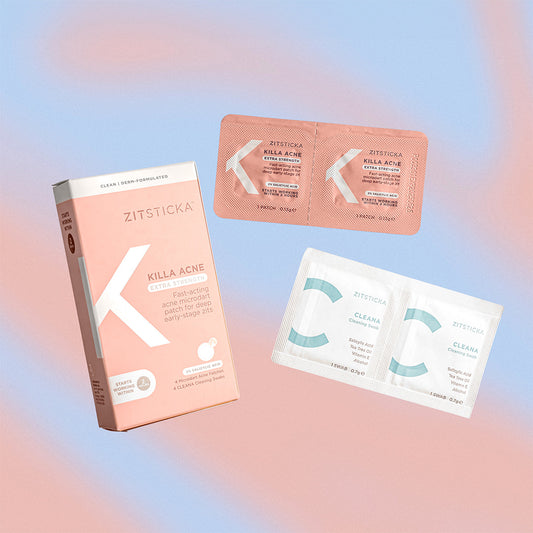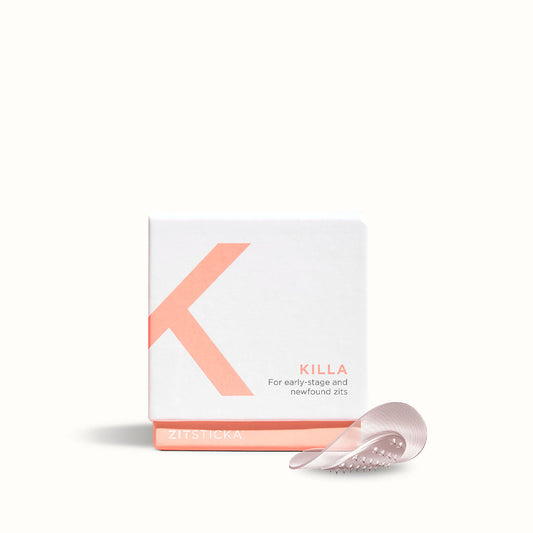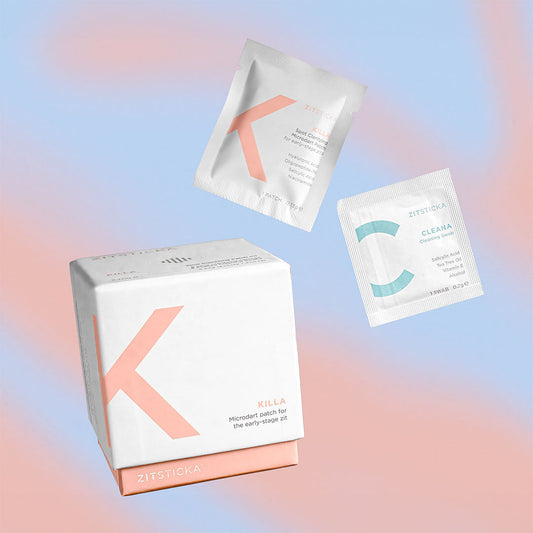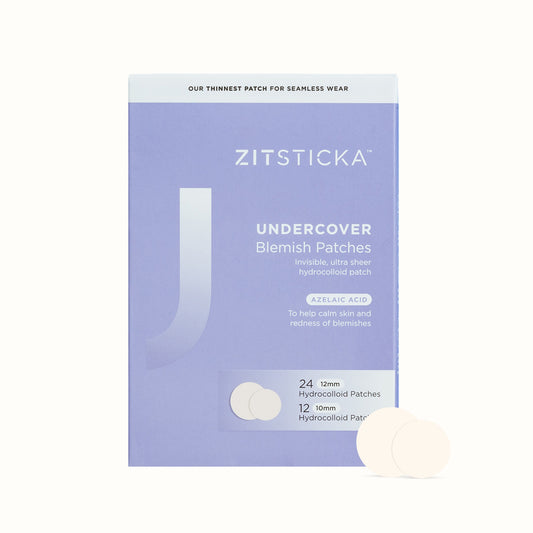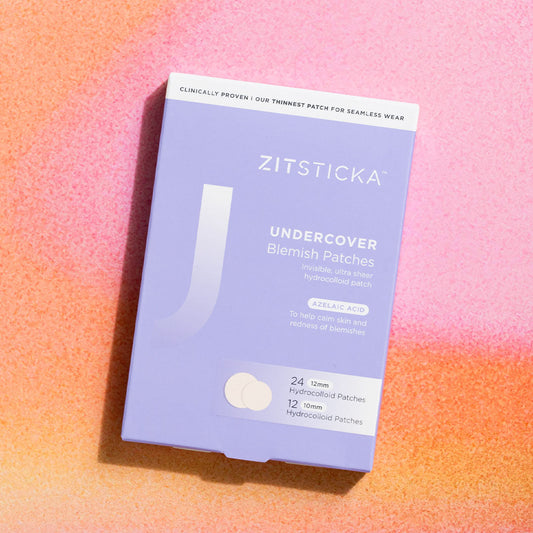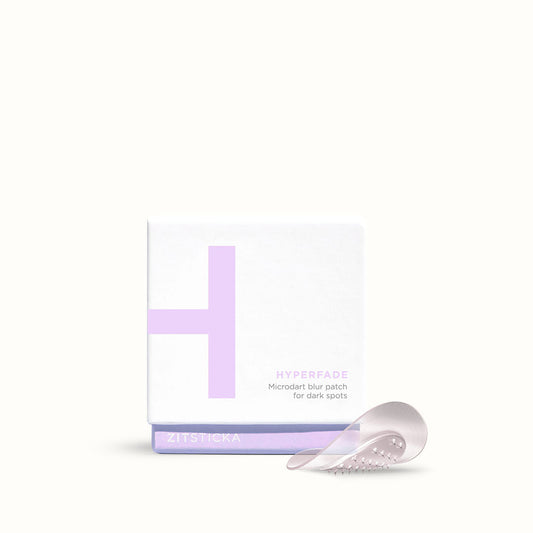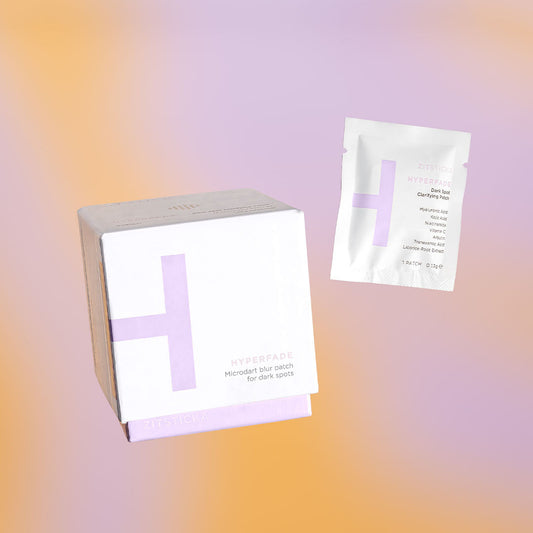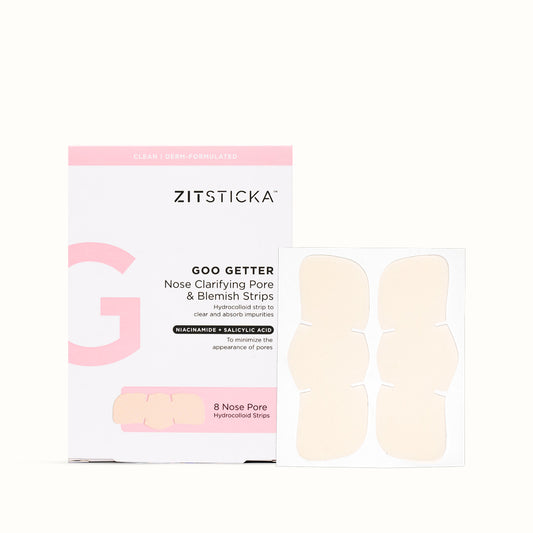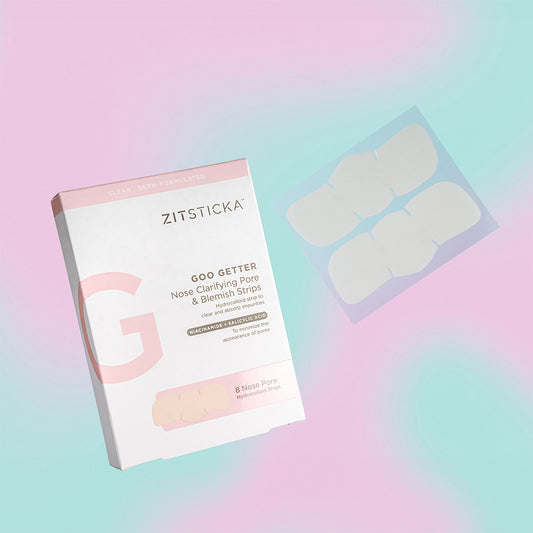We are gathered here at this url to make a case for sunscreen. Specifically, our new SPF 50 for acne-prone + sensitive skin: MEGASHADE. Why do we need to make a case? Well… sunscreens have come with downsides and limitations over the years. Some leave a white cast. Some clog your pores and give you zits like it’s nobody’s business. Some don’t even fully protect your skin, leaving you with bucket loads of hyperpigmentation! It’s 2021— where, for the love of sun, are the effective sunscreens?!? This is why we took this obvious opportunity to create our own. When it comes to the efficacy of sunscreens, the SPF level and the ingredient formulation are absolutely vital. And so! We will here and now break down the superlative MEGASHADE ingredients and SPF info that will really get you ~in the know~.

UVA, UVB, & SPF Protection: The Comprehensive Sunscreen That Is Megashade
We’re talking about sunscreen, y’all. Let’s not act like we’re surprised that we’re discussing UVA and UVB rays. Don’t know the difference? Keep reading! Let’s quickly delineate between the two:
UVA (Ultraviolet A): Protects against the aging* rays. These are the rays that cause wrinkles
UVB (Ultraviolet B): Protects against the burning rays. These rays cause and exacerbate hyperpigmentation.
(*We just want to hop in here quickly and say that aging is not a thing to be feared or disparaged! Rather, it’s a beautiful *fact of life*.)
So we’re just taking a wild, goofy, crazy guess that you’d want to be protected from both of these scary ultraviolets? Is the sky blue? Well, this is when the term “broad spectrum” comes into play. We’re not talking about a broad spectrum of various delicious cheeses here (although let us know if you'd like us to?). You’ve probably seen this phrase on sunscreens in your local Target. It essentially means that particular sunscreen protects against both UVA and UVB rays! Do we have a winner?! Not quite yet…
Let’s get to digits. SPF digits, to be exact. SPF stands for “sun protection factor”. This tells us the exact levels of protection we’re getting from the sunscreen.So, is there a big diff between SPF 30 and SPF 50? Welllll… An SPF 30 allows about 3% of UVB rays to hit your skin. An SPF 50 allows about 2% of those rays through. That may seem like a small difference until you realize that the SPF 30 is allowing 50% more UV radiation onto your so cherished skin. Therefore, it is our duty to point you to SPF 50 if you’re really serious about protecting your skin. This is us not-so-subtly letting you know our new SPF for acne-prone skin is, in fact, SPF 50!
Niacinamide
Soothes redness and inflammation associated with breakouts.
And now, for the ACTUAL ingredients. We must first begin with skincare’s darling, niacinamide. Remember those many times you just could not resist popping your zit as if it were your life’s singular mission?!? And then proceeded to make it angrier? And then pop it again? And then proceeded to develop an uninvited dark spot? Niacinamide helps with ALL of that mess you just created. Niacinamide basically says *NOT TODAY* to the creation of melanin (the pigment that gives color to those scars and areas of hyperpigmentation). Niacinny (our new nickname for it, don’t come for us) is also in the business of strengthening cellular bonds and tightening the skin. This business then creates an anti-inflammatory response that can prevent the creation of more zits. But wait! There’s a bonus benefit! Niacinny has also been seen to improve the skin’s hydration and overall barrier. We’d definitely swipe right on this ingredient.
Ferulic Acid
Strong Antioxidant that helps to reduce inflammation.
Ferulic acid may sound intense, but it’s really quite the sweetheart. In short, this baby is an antioxidant who was born to minimize dark spots, sun spots, and fine lines and wrinkles. This is an ingredient, similar to niacinamide, that can truly be beloved by all skin types. How does it do all these angelic things? It protects the skin with great conviction to rid it of free radicals, infrared radiation, and ultraviolet rays. More importantly for the acne-prone folk, it can protect the skin from oxidative damage. Oxidative damage can induce inflammation, which blocks the pores, therefore leading to breakouts. It acts as the shield that protects the realm, and that is completely undramatic.
Colloidal Oatmeal
Antioxidant and inflammatory benefits, helps to lock in moisture.
PlOt TwIsT! Oatmeal isn’t just good for baking! Specifically colloidal oatmeal is a lowkey fantastical antioxidant with heaps of anti-inflammatory benefits and moisture surging benefits as well (If you haven’t been able to tell already, antioxidants are key when it comes to effective sunscreens)!
Colloidal oatmeal is technically ground oatmeal that’s transformed into a liquid for optimal absorption. If you suffer from eczema, you’ve most likely used this ingredient before to soothe any irritated skin. With it’s emollient composition, it is truly The King of soothing inflammation and irritation. Another reputable reason to love colloidal oatmeal is its hydration-locking abilities. Not only does it protect the skin from losing moisture, but it simultaneously contains water-binding abilities.
Kakadu Plum
Highest known source of vitamin C (fights free radicals/antioxidant-rich). Helps with inflammation, ideal for sensitive skin.
We’re honestly unsure as to how this ingredient doesn’t have its own billboard in Times Square. Not only is it just cute as hell (see above image), but it also contains the highest known source of concentration vitamin C. In case you didn’t know the outstanding benefits of vitamin C, let’s take a walk down memory lane! Vit C not only provides complexion brightening abilities, but it also heavily reduces hyperpigmentation, protects against harsh free radicals, soothes inflammation, and this specific source of vitamin C is fantastic for sensitive skin. A true angel on this earth.
Oh wait, we weren’t finished. Kakadu plum also promotes the creation of proline, which is amino acid that produces collagen. This production of collagen can lead to firmer and plumper skin. Swinging back to free radicals, its high antioxidant composition allows it to effectively guard the skin from free radicals from the sun, environmental toxins, and pollution— basically everything you’d want while you’re out and about in the great outdoors.
Tea Tree
Antibacterial nature helps to repel breakout-causing bacteria.
This is not the new ingredient on the block. Tea tree oil is an oldie but a goodie for a reason! Due to its natural antibacterial and anti-inflammatory properties is an old reliable when it comes to repelling breakout-causing bacteria. Having this as an addition to a sunscreen is really just turning the sunscreen into a first class overachiever.
Ceramide NG
Helps skin retain water and to remain supple, smooth and hydrated.
First, let us gossip about ceramides—dw, we’ll only be saying nice things behind their backs. Ceramides are naturally occurring lipids in the body that make up about half of the skin’s overall structure. They basically hold the skin cells together! They put the whole team on their backs. Ceramide NG is one of the 9 ceramides naturally found in our skin. This ingredient gives the skin the perfect boost in retaining water for the skin to remain supple, smooth and hydrated.
Aloe Vera
Helps to kill acne causing bacteria whilst soothing irritation caused by breakouts.
Aloe vera isn’t only for sunburns, peepz! Aloe is world renowned for its medicinal and healing properties. The substance within the actual plant contains a juicy amount of antioxidants, minerals, amino acids, and vitamins. It also is antibacterial, making it a phenom solution for killing zit causing bacteria while soothing irritation caused by those breakouts.
Vitamin E
A powerful antioxidant that helps reduce UV and free radical damage.
Oh look! Yet another antioxidant! And she is welcomed, always. This antioxidant-rich vitamin is composed of 8 different tocopherols. These are the things that protect your skin from free radical and UV damage. Vitamin E actually sacrifices itself and absorbs the ultraviolet light energy for you, instead of letting your skin absorb it.
Hyaluronic Acid
Moisture magnet keeping the skin hydrated and elastic.
Hyaluronic acid. The moisture magnet. This ingredient can literally take all our money. HA is actually a naturally occurring sugar in our skin that retains honestly an award-winning amount of water to keep the skin hydrated and plump! It both brings moisture to the skin while also blocking that water from escaping into the air.
With all of these ingredients combined, you get a top shelf recipe for a dark spot preventing, dew boosting, and zit killing sunscreen that should definitely take 1st place at the sunscreen olympics. You heard it here first.
Thinking of getting off birth control, but worried about the pimple repercussions? Click here to read a firsthand account of this exact experience! Spoiler alert: She may have found a solution to her skin probs.

